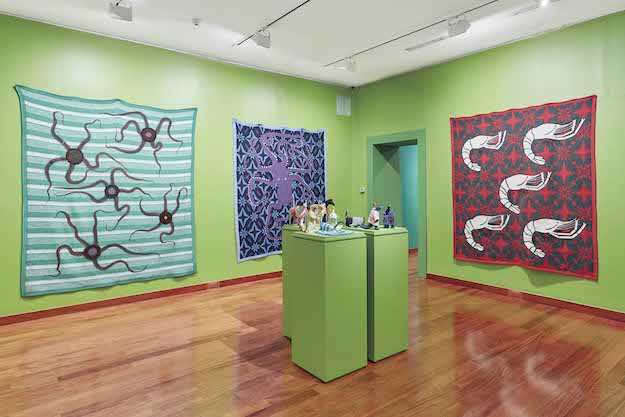This article is adapted from AQ’s special report on migration
When Argentina’s military junta finally ceded power in 1983, the country’s art world — like much of society — was transformed by a newfound sense of openness. For the first time in a generation, the right to one’s own identity and sexuality became a more urgent cause for young artists than denouncing crimes of the state. For the avant-garde painters, sculptors, musicians and others who came of age at this time, affection and free expression began to replace political ideology.
One artist whose work captured this new democratic spirit was Feliciano Centurión, an artist from Paraguay who moved to Buenos Aires in the early 1980s.
The openly gay, long-haired Centurión surely dealt with prejudice and marginalization as he grew up and moved to the city as a struggling artist. But the local art community embraced him. His seductive embroidering, featuring extravagant animals and heartbreaking phrases about love, life and death, connected with Argentina’s newly expressive young artists. He became part of an important group of artists who displayed their work at the Centro Cultural Ricardo Rojas, a ramshackle gallery that was little more than a wide hallway in central Buenos Aires.
Centurión died of complications from AIDS in 1996 at just 34, but his work offers delicate testimony to a life lived to the full. On a recent trip to Asunción and Buenos Aires, where I met with Centurión’s family and his former partner, I found trunks and boxes filled with a cornucopia of his art: blankets, embroidery, drawings and more. Many of these works are now hanging at the Americas Society gallery in New York, in an exhibit titled Abrigo.
Taken from a short text written by Centurión in which he describes the use of blankets in his art, abrigo in Spanish has a multitude of meanings: a winter coat, but also warmth, protection and refuge. The painted and embroidered blankets evoke both the physical warmth Centurión sought during cold Buenos Aires winters, and the warmth of love and human affection that served as the guiding spirit behind his work, which can be seen at the Americas Society virtual gallery.
—
Pérez-Barreiro is guest curator of Feliciano Centurión: Abrigo







